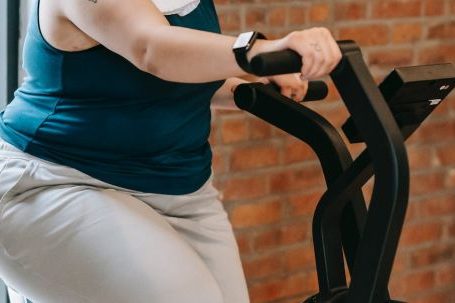Introduction:
Osteoporosis is a condition characterized by weak and brittle bones, making individuals more susceptible to fractures and breaks. It is a common problem, especially among older adults, and can significantly impact one’s quality of life. However, there are effective ways to prevent and manage osteoporosis, and one such approach is through regular cardiovascular exercise. In this article, we will explore the benefits of cardio exercises for improving bone density and preventing osteoporosis.
The Importance of Bone Density:
Bone density refers to the strength and thickness of our bones. Higher bone density means stronger bones, which are less likely to break or fracture. Unfortunately, as we age, our bone density naturally decreases, increasing the risk of developing osteoporosis. However, engaging in regular cardio exercises can help combat this decline and even improve bone density over time.
Cardiovascular Exercise and Bone Health:
Cardio exercises, also known as aerobic exercises, are activities that increase heart rate and breathing rate. They are known for their numerous benefits, such as improving cardiovascular health, promoting weight loss, and reducing the risk of chronic diseases. However, many people are unaware of the positive impact cardio exercises can have on bone health.
1. Impact on Bone Density:
Engaging in weight-bearing cardio exercises, such as walking, jogging, dancing, or stair climbing, can help improve bone density. These activities put stress on your bones, which stimulates them to become stronger and denser. Regular cardio exercises can lead to increased bone mineral density, reducing the risk of fractures and osteoporosis.
2. Enhanced Muscle Strength:
Cardio exercises not only strengthen bones but also improve muscle strength. Strong muscles provide support to your bones, reducing the risk of falls and fractures. Additionally, cardio workouts help improve balance and coordination, further decreasing the chances of accidental injuries.
3. Hormonal Benefits:
Cardio exercises have been found to positively affect hormones that play a crucial role in bone health. For instance, engaging in regular cardiovascular activities stimulates the production of growth hormone, which aids in bone formation. Furthermore, cardio exercises can help regulate estrogen levels in women, preventing the rapid bone loss that occurs during menopause.
Incorporating Cardio Exercises Into Your Routine:
Now that we understand the benefits of cardio exercises for bone health, it’s essential to know how to incorporate them into our daily routine.
1. Start Slowly:
If you’re new to cardio exercises, it’s important to start slowly and gradually increase the intensity and duration of your workouts. Begin with low-impact activities, such as walking or swimming, and then progress to more vigorous exercises over time.
2. Consistency is Key:
To reap the benefits of cardio exercises, consistency is crucial. Aim for at least 150 minutes of moderate-intensity cardio exercise per week or 75 minutes of vigorous-intensity exercise. It’s best to spread these workouts throughout the week to ensure adequate recovery time for your muscles and bones.
3. Mix it Up:
Variety is key to staying motivated and preventing boredom. Incorporate a mix of different cardio exercises into your routine, such as cycling, dancing, or using an elliptical machine. This will not only keep your workouts interesting but also engage different muscle groups and stimulate bone growth from various angles.
Conclusion:
Regular cardiovascular exercise is a powerful tool in improving bone density and preventing osteoporosis. By engaging in weight-bearing activities, enhancing muscle strength, and benefiting from hormonal changes, you can significantly reduce your risk of fractures and maintain optimal bone health. Remember to start slowly, be consistent, and mix up your workouts to maximize the benefits. So, lace up your sneakers and start incorporating cardio exercises into your daily routine for stronger, healthier bones.





